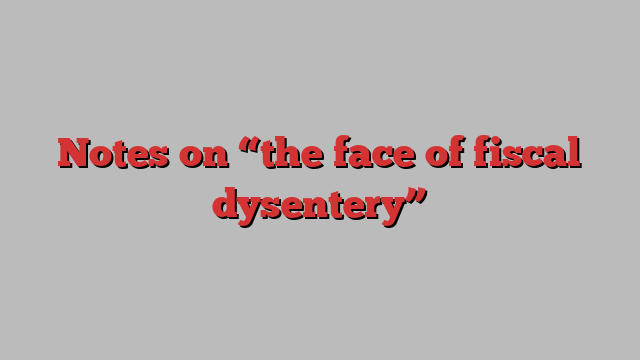
Receive free Global Economy updates
We’ll send you a myFT Daily Digest email rounding up the latest Global Economy news every morning.
Say what you like about Albert Edwards, SocGen’s longstanding global strategist and 37-year vet of the war on optimism — he’s a cracking writer.
Here’s the opener of his latest Global Strategy Weekly:
As US bond yields surge ever higher, do you feel like you are in a car you just know is about to crash but are powerless to stop? All you can do is brace yourself and hope for the best.
The hook this week is whether rising uncertainty is driving up term premia, the additional yield investors want for holding longer maturities. As recently discussed by the Unhedged team, it’s possible that weakening demand for Treasuries is being overwhelmed by increased supply.
Generalised FUD is more of a convincing explanation to Edwards than other possibilities, such as that long bonds have been pricing in higher-for-longer rates and/or improved growth prospects. How can the real economy and the interest rate outlook be driving markets “in the face of fiscal dysentery”, he asks:
The equity market’s current resilience in the face of rising bond yields reminds me very much of events in 1987, when equity investors’ bullishness was eventually squashed. And in a further parallel, currency turbulence in 1987 played a key role in exacerbating recession worries for an equity market priced for the start of a new economic cycle. Just like in 1987, any hint of recession now would surely be a devastating blow to equities. But it could be worse: thankfully we are not in the seasonally most risky month of the year . . .
(That’s September.)
Never in my career have I witnessed such uncertainty about where we are in the economic cycle. Is that long promised recession still lurking around the corner or are we at the start of a new economic cycle? Many investors are apparently increasingly convinced it’s the latter.
My own view is that a recession still lurks, but like many I have held that view for a while now and have been proved wrong — so far. But there is still plenty of evidence to suggest a recession is imminent.
Before you all rush to misquote Paul Samuelson’s best joke in the comment box, take a look at this week’s portents of doom. Edwards directs us towards this dip in the US Bureau of Labor Statistics chart on trucker employment . . .
Recession is closing in
Buckle up. pic.twitter.com/6AiEqozrhH
— Game of Trades (@GameofTrades_) October 1, 2023
. . . and last Thursday’s revisions to US GDP and its non-identical twin, gross domestic income, which failed to close a record-wide gap between the measures.
The macro bulls had been hoping for a big GDI revision because the Federal Reserve was changing its methodology for corporate earnings. In short, GDI includes Fed bank profits but excluded their interest payments. Fed bank earnings have deteriorated this year as rates increased on the Fed’s liabilities, so adding back interest paid might have been a useful counterweight.
What the bulls got instead was a 2.2-percentage-point gap between US real GDP and GDI growth, with the latter revised up to a still-anaemic 0.2 per cent year on year. The GDP-GDI gap has only been similarly wide three times before: in the last two quarters of 2007 and the second quarter of 2008, according to economist David Rosenberg.
And what about money supply, Edwards asks, not for the first time.
When people are switching out of bank deposits into money market funds it’s easy (and wrong) to dismiss contraction in narrow measures of money supply, he says — but broader measures are showing the same thing:
The last few decades have seen economists (especially at the Fed) increasingly disregard money supply. Monetarists have been marginalised — if not dismissed as cranks. That is a mistake in my opinion. I wouldn’t call myself a monetarist, but when money supply weakness (not least the record 1.5% yoy decline in eurozone M3 in August) is confirmed in the data, I sit up and take note.
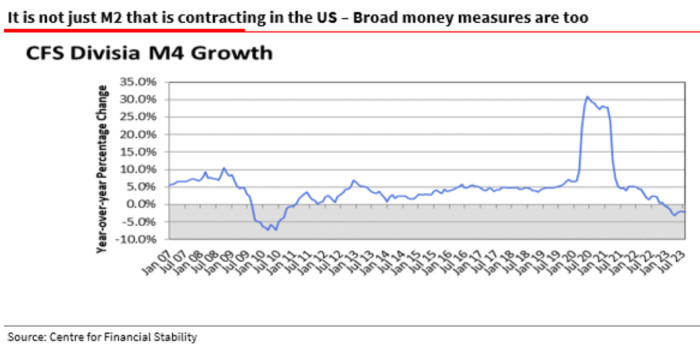
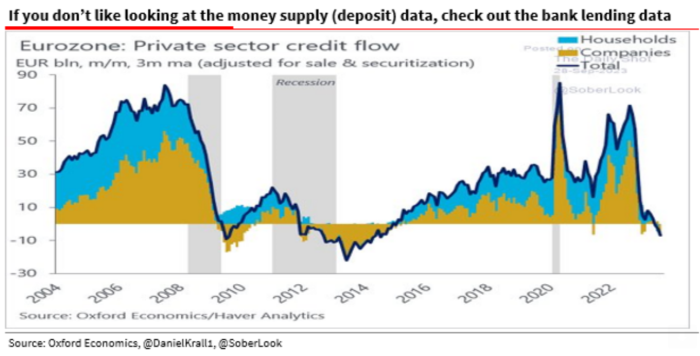
All of which brings us back to Edwards’ recent big hit, The Maddest Macro Chart He Has Seen In Years. It’s the one that shows borrowing among US non-financial corporates rising and their net interest payments collapsing.
This, he concludes, is because companies borrowed heavily during the pandemic on fixed rates and have parked the cash at variable rates. Other commentators, such as Absolute Strategy Research chief economist Dom White, have said it looked more like a data collection quirk that could be fixed by last month’s methodology revisions.
And . . . . . . . . nope.
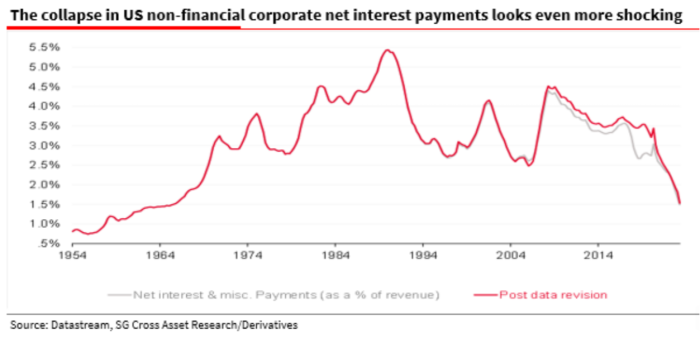
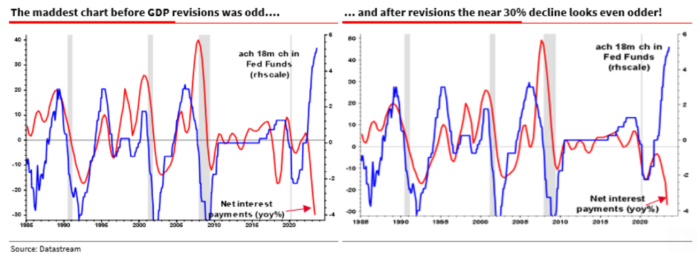
While higher rates are pushing smaller US companies into bankruptcy at the fastest pace since early pandemic, it certainly does look a lot like mega-caps are coining it in, having played the yield curve profitably (borrowing long to deposit short).
“Mad,” Edwards concludes, not for the first time.